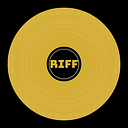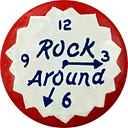‘You’re On Now, Get Out There!’ Musicians Recall Fillmore East’s Opening Night with Janis Joplin
Please do not highlight.
For three years, beginning on March 8, 1968, New York’s Fillmore East hosted the cream of rock royalty; Jimi Hendrix, John Lennon, The Who, Eric Clapton, and Elton John appeared on its stage. Fillmore East’s debut featured psychedelic rock’s Big Brother & the Holding Company, fronted by Janis Joplin, folk singer-songwriter Tim Buckley, and blues legend Albert King.
During 1967’s Summer of Love, the Village Theater at 105 Second Avenue was New York’s premier rock music venue. Two blocks south, the Anderson Theater competed with rock acts in early 1968. But the landscape changed later that year when San Francisco promoter Bill Graham converted the Village Theater into the Fillmore East. Most of Graham’s technical staff defected from the Anderson, which soon closed.
Graham introduced young white fans to blues, jazz, soul, and Latin artists with eclectic lineups every weekend. The hall’s legendary acoustics made it a favorite place for artists like the Allman Brothers, the Grateful Dead, and Frank Zappa to record live albums. The Joshua Light Show was the first to accompany musicians with multimedia psychedelic spectacles.
By June 1971, the concert industry had changed as larger venues began to present rock acts. Graham, exhausted from running Fillmore East and San Francisco’s Fillmore West, closed both venues but, after a short retirement, returned to concert promotion. Graham died in a helicopter crash in 1991. Though its facade remains, the rest of Fillmore East’s building was demolished and rebuilt as an apartment complex.
In an excerpt from Fillmore East: The Venue That Changed Rock Music Forever, Big Brother’s guitarist Sam Andrew, who died in 2015, and drummer Dave Getz recall opening night at “The Church of Rock and Roll.”
Sam Andrew: Bill hated us personally and musically for it seemed like a year in San Francisco. The time is so telescoped; Janis’ whole thing was two-and-a-half years with us. He had a big shouting match with Janis and with me two separate times.
He used every word he could think of. He couldn’t stand us, but then either we got better and she learned how to sing with the band, or else he just bowed to the fans. He was always professional. We had a real cordial relationship later.
I loved Bill Graham a lot. He was a professional. He really got down on me that night. I was late. We were still living at the Chelsea Hotel, and I fell asleep. I was supposed to come over, and I was late. He was stomping around the floor; he was really angry. “I got damn amateurs!”
I said, “Bill, you don’t have to pay me. I feel terrible about this, and you don’t have to pay me if you don’t want to.” He softened immediately. He said, “Aw, it’s OK. Just be on time from now on.” And I was.
Dave Getz: One of the first things that happened at the Fillmore East was that Albert King’s drummer was taken away by the military police. It was a big deal. They were waiting for him at the theater, and when Albert King’s drummer showed up, they just hauled him away. There was a military police van outside, and apparently, he was AWOL from the Army.
So they took him away and Albert King did not have a drummer. Buddy Miles was at the show, but Buddy Miles had another gig. So Buddy Miles said, “I’ll play the first set.” Albert King was cool with that.
After Buddy Miles left, I had to play with Albert King. No one remembers this. Of course, I remember it like it was yesterday. It was, “You’re on now, get out there!” And that was fucking scary for me because I was a rock drummer. I admired Albert King, and I wasn’t going to say no for sure. It was an opportunity for me to play with fucking Albert King.
But it was scary because he was a big, scary guy, Albert King, and he turned around at one point, I think I was playing “Crosscut Saw,” he turned around and he said something like, “Don’t slow up, boy” and then turned back.
Anything — any reprimand — he could have come and beat the shit out of me. He was known for that. He was known for punching out guys in his band. He was a very intimidating figure.
Sam Andrew: That was a great show. It was incredible being there. That audience was wild. Albert King always stands out in my mind. He was standing backstage, and I said, “How did you string that guitar? What chord is that?” And he said, “Well, I have different strings on it.” He was kind of unforthcoming but very friendly at the same time.
Tim Buckley was so sweet and mild. It was a thrill to open with these guys. Each band was from a different world, really. And just being on the Lower East Side, walking around and seeing everyone in Afghan coats and the Ukrainian Easter eggs, it was really colorful and great to be there.
Dave Getz: I grew up in Brooklyn. My parents and my Aunt Betty lived on the Lower East Side, then moved to Bedford-Stuyvesant in Brooklyn, and they grew up there.
When Graham bought the Village Theater and made it the Fillmore East, the first show, my Aunt Betty came with my mother. And they both remembered the theater as the place where they had gone to see Molly Picon and people like that from the old Yiddish theater days.
Big Brother is headlining the opening of Fillmore East and there in the audience are my mother and my Aunt Betty. I’d gotten them really good seats, right in the middle. I tell Janis about it, and I said, “That’s my Aunt Betty.” At some point in the set, Janis said, “This is dedicated to Dave’s Aunt Betty.”
And my Aunt Betty, that was fuel for her for the rest of her life. That gave her some reason to live. She never forgot it, and any time I went to New York after that, she’d remember that Janis Joplin had mentioned her name and said something about her on stage at the Fillmore East.
Sam Andrew: Janis was really, really consistent. Janis was incredible at those gigs, everything she did. The band was really uneven. We’d have really great nights and then nights where it seemed like we couldn’t play at all. But Janis was consistent both in performance and in the studio all the time. She always delivered. It was really good and really in tune, you know, right on the money.
From that first Fillmore show, Janis was always extremely insecure. She was really powerful and really insecure at the same time. So at that Fillmore East opening, she was frantic. It was like obsessive-compulsive, asking me how she did over and over and over again.
She wouldn’t stop, like the needle got stuck. She’d say, “What do you think about the show? How was I? What do you think, was it good? Was it good?” Over and over, it was so intense. It was something to be with someone who was that talented and that insecure at the same time. That particular night, the first night at the Fillmore.
Frank Mastropolo is the author of Fillmore East: The Venue That Changed Rock Music Forever.

